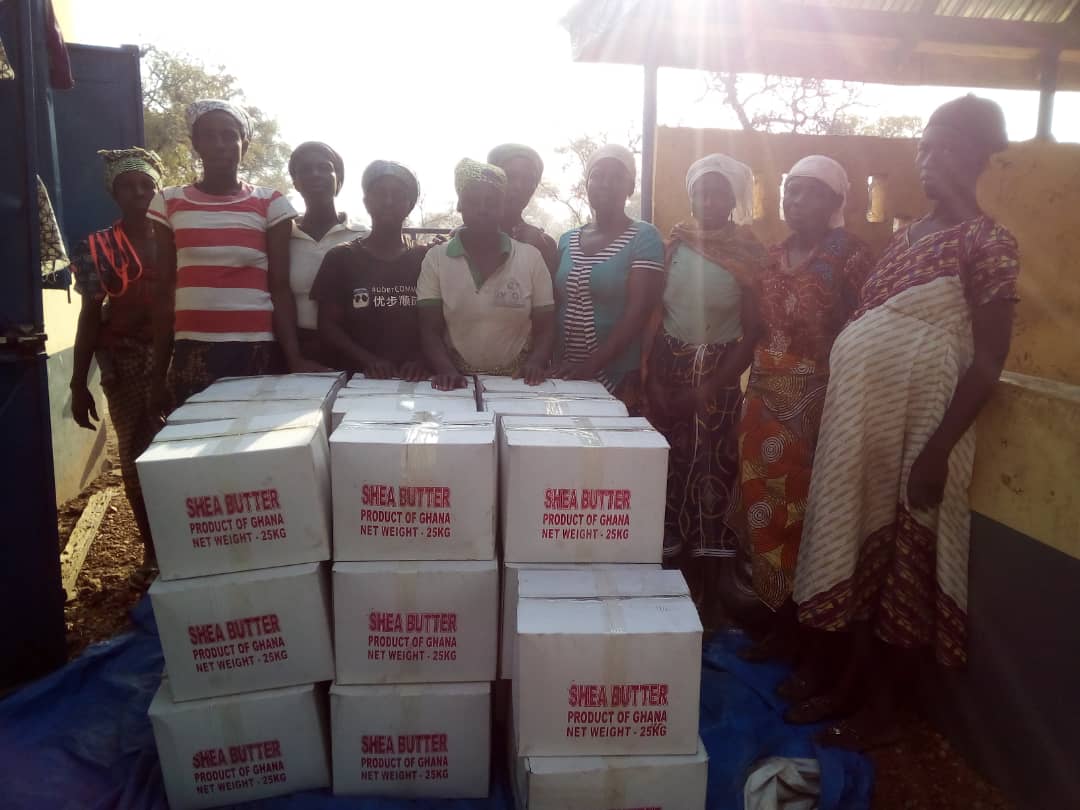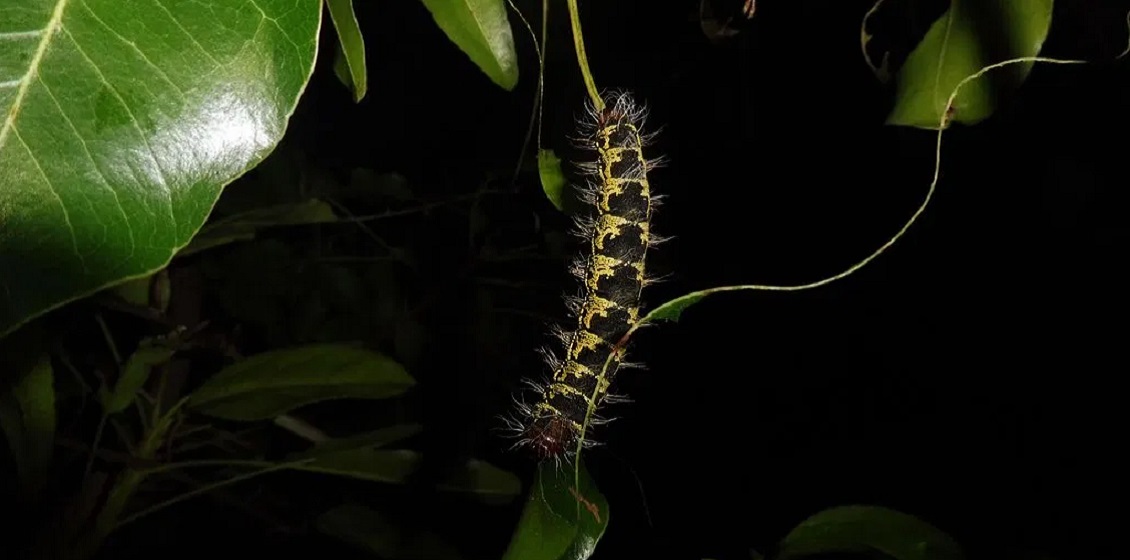This article is about my master’s fieldwork experience in Ghana, where I looked into the contribution of an edible pest species to rural livelihoods in the country and the accessibility constraints associated with its harvest. As Erasmus Mundus scholars, we are not entitled to funds if we choose to do our thesis fieldwork in our home country. Bearing that in mind, I had to dig in the literature to find a topic that fits well within my research domain. Having completed the first year of my master’s in the UK, where I took a module on research communication, I had a bunch of thoughts on the kind of topic I should be doing for my thesis. They were quite vague then, and it took me a month or so to narrow down my research idea into a proposal.
I should say I was fortunate enough to have left Denmark for Ghana before the COVID situation worsened in Europe. Thanks to my supervisor Dr. Marieve Pouliot, who had no objection to me leaving the country before the university research committee approved my proposal. Unlike my fellow batchmates, I did not contemplate too much about leaving for my field early in February 2020. If I were to be indecisive about this, I would have just remained in Copenhagen writing a literature-based thesis like most of my friends.
Why shea caterpillars?
Shea tree is the second most important source of oil in Africa after palm nut trees. An estimate of 150,000-200,000 tons of shea nuts are exported annually from West Africa, 33% of which comes from Ghana alone. It forms an essential component of agroforestry systems in West Africa, contributing significantly towards the subsistence of the rural populace in the region. Furthermore, shea is largely a women’s crop as everything from its collection to trade is done by women. It is hence known as ‘women’s gold’ in West Africa. In Northern Ghana, shea forms the counterpart of cocoa, which is the widely grown cash crop in its south. Instability in the global market price of cocoa since the 1970s and the need to find a substitute to cocoa in the confectionery industries has enhanced the market prospects of shea nuts. With the discovery of shea butter as a quality substitute for cocoa butter in chocolate industries, the market demand for shea butter, and the nuts as such, has boomed considerably over the years. It has further lessened the north-south economic divide in Ghana, where people in the south had cocoa as a reliable source of income compared to the population in its North. Hence, shea is also known as the ‘cocoa of the north’.
Not much information was available then when I got to Ghana to study the shea caterpillars. It is an edible pest species found associated with shea trees in Sub Saharan Africa. In Ghana, shea trees occur only in its north. In the recent past, shea caterpillars have itself become a commodity as a food. There has been a tremendous increase in its market price over the last five years, and now it costs more than double that of a bowl of shea nuts, which is the principal product of shea. Their availability is highly seasonal, and they appear for hardly 2-3 weeks a year after the shea trees have fruited. They feed exclusively on shea leaves, causing considerable defoliation of the shea trees. Though shea caterpillar is one among the 33 known pest species infecting shea, it is not a serious pest that farmer needs to get rid of. But there have been contrasting reports saying shea caterpillars to have a toll on the shea nut yield, with some authors calling it a positive pest that aids shea fruit production. The most recent papers on shea caterpillars from Burkina Faso portrait shea caterpillars as a positive pest that does not affect the shea yield. Also, it reports defoliation of the shea trees to have a positive effect on the productivity of maize crops growing beneath it.
Inspiration to take up this topic
Of the many assignments that I had in Bangor University, it was a poster presentation on traditional knowledge that inspired me to look into the prospects of edible insect trade as an alternative livelihood option in rural Africa. I should say I was quite adamant about choosing a topic that is less studied. It was then that I got to hear about shea caterpillars from one of our professors at IFRO. A search of the literature on shea caterpillars gave limited results. The available literature was mainly from Burkina and Togo, where it was the second most consumed insect species and formed an important source of income for rural women. Given the importance of shea to household income in northern Ghana, I was quite inquisitive to study about the contribution of these caterpillars to rural livelihoods in the country.
As an international student with no previous experience nor contacts in Africa, I had to take help from my Ghanaian batchmates in finding potential NGOs that I could collaborate with. Thanks to Pure Trust Social Investors Foundation, Tamale, as they were impressed by my research thought as no one has ever looked into the prospects of shea caterpillars as a sustainable livelihood option, surprisingly not even the Shea Network Ghana, one of the leading shea based NGOs in Ghana. This necessitated a reconnaissance survey as we had to identify the communities that consumed shea caterpillars, which of course took quite some time as well.
Fieldwork at the time of the COVID pandemic
The most challenging part of my fieldwork was the intercity transport as the majority of the communities that we identified were located in the Upper East Region of Ghana, and the NGO that I worked with had limited resources in the Upper East. Given the travel restrictions in the country, I had to base myself in Bunkpurugu, the regional capital, as it is nearer to the communities than Tamale. Commuting through the rugged terrains of the Upper East on mountain bikes was another risky task that I endured as my research grant didn’t allow me to afford a car for two months. Also, my limited period of stay in Bunkpurugu forced me to complete my fieldwork in just two months.
For understanding the contribution of shea caterpillars to the household income, we employed a household survey in two of the chosen communities, Najong 2 and Bimbago, where the Bimobas formed the majority. Though we identified 27 communities to consume shea caterpillars, the pandemic situation and limited time restricted my study to just two communities, where almost all the households engaged in caterpillar harvest or consumed it at some point during the ‘Lantinta season’ (Lantinta is the Moar term for shea caterpillars). Again, I started the household survey with an intuitive target of 100 households as I could only get an approximate number of households in the chosen communities. But the situation worsened from the second week of March as the rising number of corona cases in the south left the people worried, and they were no longer ready to cooperate with me. Thus, I had to stop my fieldwork as people started complicating things to an extent that I could barely go out alone. Not to mention how much I was dismayed when people started calling me ‘CORONA MAN’ that I had to take help from the Royal Danish Embassy to fly back to Denmark.
Prospects of shea caterpillar as a potential source of livelihood
Shea caterpillars are largely used for subsistence in Ghana. Unlike in Burkina Faso, where the households’ income from shea caterpillars is equivalent to income from shea nuts, the accessibility constraints associated with its harvest makes it one of the least consumed insect species in Ghana. Since 2014, when the price of a bowl of shea caterpillars got to reach 2.5 US dollars, people have started to realize the economic potential of these caterpillars. With the Ghanaian government already recognizing the potential of shea in alleviating poverty in the rural suburbs of the country, the market potential of one of its pest species could encourage people in conserving the existing shea parklands in the country.
Earlier shea picking used to be a collective activity, but it has now become more of an individual activity. Following the commercialization of shea nuts and shea butter as an economical substitute to cocoa butter in the chocolate and cosmetics industry, several restrictions have propped up since then. It is no different for shea caterpillars, the access to which used to be free, unlike the shea nuts. More recently, farmers have started restricting outsiders from collecting shea caterpillars from their farmlands. The caterpillar harvest takes place at early dawn before the sunrise, and therefore, farmers are also afraid of the collectors damaging their crops while raking the ground. This is another reason why most of the farmers restrict outsiders. Restrictions are minimal in fallows and bushlands, which are less preferred by the collectors because of the fear of snake bites.
It is estimated that a total of 58,117 kg of shea caterpillars are traded annually in the five key markets of the Upper East Region alone, namely Nakpanduri, Bimbago, Najong 1, Najong 2, and Bunkpurugu. The caterpillar traders interviewed feel that selling shea caterpillars would earn them more money than selling shea nuts. The demand for shea caterpillars has increased over the years, with many young ladies getting into the business in recent years. Apart from the traders who are into caterpillar trade, women and sometimes children do take their excess harvest to sell in the market by themselves. Like shea nuts, shea caterpillars trade is also a women’s business in Ghana. It could therefore serve as an indirect pathway to women empowerment, if researchers get to foresee its future prospects as a face lifter to shea conservation and the industry in general.
Given the restrictions to accessing shea resources, the traders now have to approach 10-20 collectors every time when they go to procure the caterpillars. Also, the communities feel that the increased use of chemical pesticides, climate change, and cutting of shea trees have taken a toll on the availability of the caterpillars over the years. According to the collectors, not all lands are capitalized for collecting the caterpillars, and no specific harvesting techniques are employed in the region. Perhaps, it could be the reason for the poor harvest even in areas where the collectors claim the caterpillars are in surplus.
Caterpillars are picked from the ground as they descend from the tree in their final larval stage after causing considerable defoliation of the shea trees. Hence, their harvest is sustainable by all means. Also, shea caterpillars are a rich source of protein and iron, and could be a potential food supplement to combat malnutrition in West Africa. Given its limited availability and uncertainty in occurrence, shea caterpillars cannot be a reliable source of income for the households. If it is made available round the year and if its large-scale rearing is made possible in the continent, it is for sure that shea caterpillars would itself become a cash crop. As the world looks through to sustainable food solutions, insects would be the most ideal and feasible option that people could rely on. With insect-based food supplements already hitting the markets in Europe, hopefully, we could expect to see more of such insect products filling up the supermarkets in the near future.
Having defended my thesis in October, I am content that my findings may aid any efforts taken to conserve the existing shea parklands in West Africa. People needs to be aware of the economic potentials of these caterpillars as not all communities are into caterpillar trade. That could encourage them to capitalize the bushlands that are largely neglected due to the fear of snakes. I am delighted to have presented my work in two international conferences so far. Now, as a postgraduate from the University of Copenhagen, I am trying to establish myself in Denmark as a researcher. I am looking for PhD positions in forestry and development studies in Europe. Also, I would be happy to work as a development consultant in the Global South.
Krishnanunni Mavinkal Ravindran has a MSc in Sustainable Tropical Forestry, University of Copenhagen
SUPPORT DDRN SCIENCE JOURNALISM. DONATE DKK 20 OR MORE (APPLICABLE IN DENMARK ONLY)
(APPLICABLE IN DENMARK ONLY)

 MSc in Sustainable Tropical Forestry
MSc in Sustainable Tropical Forestry

![]()
![]()
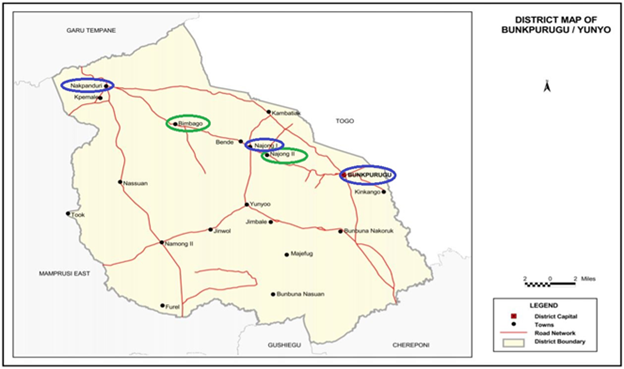
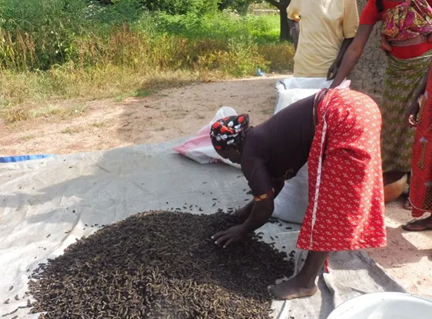
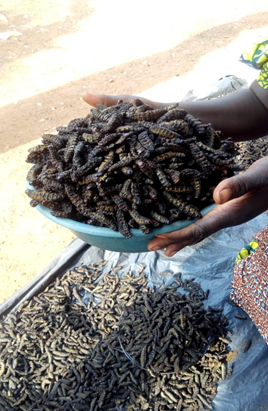
Dried shea caterpillars on sale, Bunkpurugu market




